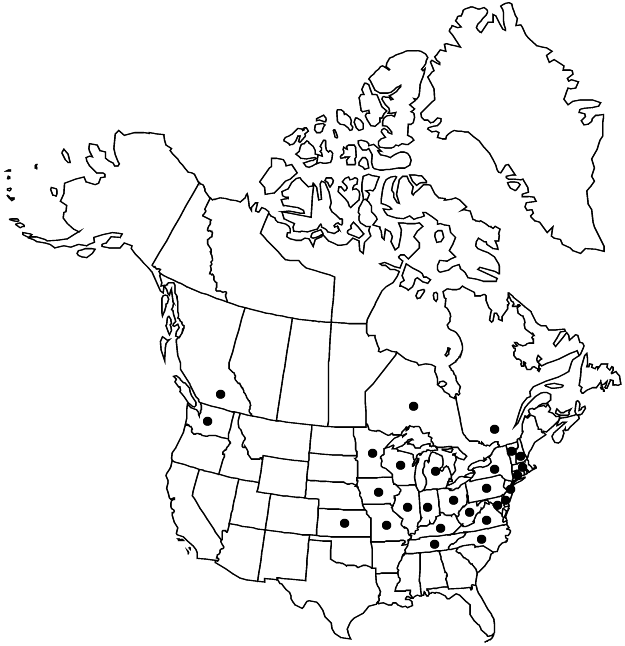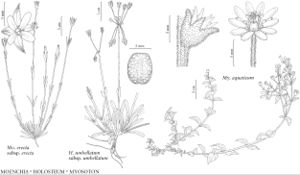Myosoton aquaticum
Methodus, 225. 1794.
Stems 10–100 cm, minutely glandular-pilose distally. Leaf blades 2–3.5(–8.5) × 1–2(–4.4) cm. Pedicels 1–2(–3) cm, minutely glandular-pilose. Flowers: sepals 4–6 mm, to 9 mm in fruit; petals 4–7 mm, mostly exceeding sepals. Capsules 5–10 mm, usually slightly exceeding calyx. 2n = 20(?) (Asia), 28 (Europe, Asia), 29 (Europe).
Phenology: Flowering spring–fall.
Habitat: Stream banks, low woods, marshes, meadows, occasionally cultivated areas
Elevation: 100-700 m
Distribution

Introduced; B.C., Ont., Que., Conn., Del., Ill., Ind., Iowa, Kans., Ky., Md., Mass., Mich., Minn., Mo., N.H., N.J., N.Y., N.C., Ohio, Pa., Tenn., Vt., Va., Wash., W.Va., Wis., Europe, temperate Asia.
Discussion
Reports of Myosoton aquaticum from Louisiana appear to be based on misidentified specimens of Stellaria cuspidata Willdenow ex Schlechtendal subsp. prostrata (Baldwin) J. K. Morton.
Although occurring over a wide area, Myosoton aquaticum is often noted as rare or occasional in particular states or provinces. Very few collections of this species from the flora area were made prior to 1900; two of the first gatherings were from port areas (Baltimore, Maryland, and as a ballast plant in Philadelphia, Pennsylvania, in 1877). Its presence outside the Japanese Pavillion at the Philadelphia Centennial Grounds in 1878 (Scribner 50 and 51, MO) suggests an escape from an intentional introduction.
Selected References
None.
